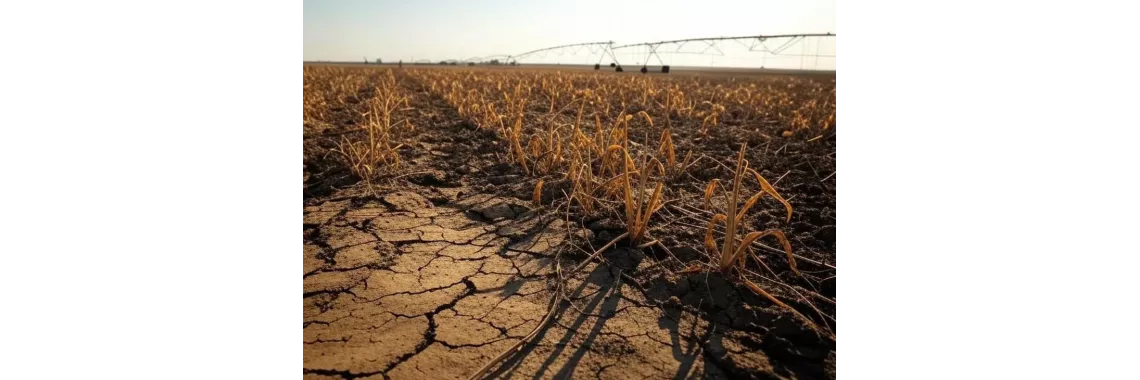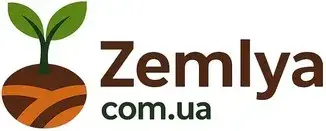How to Fight Drought in Agriculture: Effective Solutions for Ukraine

By zemlya.com.ua - 20/04/2025 - 0 comments
Drought is one of the key threats to Ukrainian agriculture, especially in the context of climate change. A lack of precipitation leads to reduced yields, increased costs, and financial losses for farmers. In this article, we will explore how to combat drought in agriculture, which methods and technologies can help minimize risks, and offer practical steps for agribusiness owners. From modern irrigation systems to selecting drought-resistant crops, you will find solutions tailored to Ukrainian realities.
The Problem of Drought in Ukrainian Agriculture
Why Has Drought Become a Critical Issue?
Drought in Ukraine is becoming more frequent due to global warming. According to the Ukrainian Hydrometeorological Center, over the past 30 years, the number of drought periods has increased by 20%, particularly in the southern and eastern regions. This leads to a shortage of soil moisture, directly affecting the yield of grains, oilseeds, and vegetables.
- Economic Losses: In 2020, farmers in southern regions lost up to 60% of their harvest due to drought.
- Environmental Consequences: Soil degradation and desertification threaten land fertility.
- Social Risks: Reduced farmer incomes impact employment in rural areas.
How Does Drought Affect Agribusiness?
For agribusiness owners, drought means not only reduced harvests but also additional costs for irrigation, fertilizers, and plant protection. Without effective drought mitigation measures, businesses may face:
- Increased production costs.
- Reduced market competitiveness.
- The need to find new water sources.
However, modern technologies and approaches can help minimize these risks. Let’s explore solutions to overcome drought.
Effective Methods to Combat Drought in Agriculture
1. Using Drought-Resistant Crop Varieties
Choosing the right varieties is the first step toward agricultural resilience in drought conditions. Drought-resistant crops can efficiently use limited moisture resources and maintain yields even with scarce rainfall.
- Wheat: Varieties developed in Crimea show 30% higher yields under drought conditions.
- Corn and Sorghum: These crops better tolerate spring droughts.
- Peanuts: Require minimal irrigation with adequate rainfall.
Tip: Collaborate with local research institutes, such as the Ulyanivsk Research Institute of Agriculture, to select adapted varieties.
2. Modern Irrigation Systems
Irrigation is the most effective way to combat drought, but it requires investment. Popular systems in Ukraine include:
| Irrigation Type | Advantages | Disadvantages | Estimated Cost (UAH/ha) |
|---|---|---|---|
| Drip Irrigation | Up to 50% water savings, precise watering | High installation costs | 100,000–150,000 |
| Sprinkler Irrigation | Suitable for large areas | Water loss due to evaporation | 80,000–120,000 |
| Subsurface Irrigation | Minimal moisture loss | Complex installation | 150,000–200,000 |
In the “Progress” farm (Zaporizhzhia region), drip irrigation increased sunflower yields by 25%.
3. Soil Moisture Conservation
Proper soil management helps retain moisture and prevent evaporation. Key methods include:
- Minimal Tillage: Reduces evaporation and preserves soil structure.
- Mulching: Using straw or agrotextiles reduces moisture loss by up to 30%.
- Deep Plowing: Improves soil water absorption.
Practical Tip: Perform harrowing or rolling after sowing to retain moisture.
4. Innovative Technologies and Automation
Modern technologies optimize water use and predict droughts. In Ukraine, the following are actively implemented:
- Weather Stations: Sensors measure soil and air humidity, aiding irrigation planning.
- Drones: Used to monitor field conditions and assess water needs.
- Blockchain: Tracks supply chains and product quality during droughts.
For example, in Pakistan, drones for monitoring drought-resistant cotton varieties increased yields by 30%.
5. Using Vinegar to Enhance Drought Resistance
Recent studies show that vinegar can help plants cope with drought. Japanese scientists found that treating plants with acetic acid activates their ability to use acetate instead of sugar in water-scarce conditions.
- How to Apply: Dilute vinegar in water (1:100) and spray plants during drought.
- Benefits: Affordable and eco-friendly solution.
- Note: Test the solution on a small area first to avoid plant damage.
6. Adaptive Landscape Farming System
Developed by the Ulyanivsk Research Institute, this system accounts for climate and soil specifics to minimize drought impacts. It includes:
- Rational crop placement based on drought resistance.
- Using fertilizers to improve soil fertility.
- Moisture retention measures, such as snow retention.
Implementing this system in the Ulyanivsk region increased grain yields by 15% in dry years.
Case Studies and Examples from Ukraine
Zaporizhzhia-Agro Farm
On 18,000 hectares, the farm implemented drip irrigation and drought-resistant corn hybrids. Result: yields increased by 20%, and water costs dropped by 30%.
Crimean Research Institute of Agriculture
The institute developed new winter crop varieties that ensure stable yields even in drought conditions. Winter grains dominate, utilizing autumn rainfall.
Common Mistakes and Myths About Drought Mitigation
Myth 1: Irrigation Solves All Problems
While irrigation is effective, its high cost and complexity make it inaccessible for small farms. A comprehensive approach, including variety selection and soil management, is often more cost-effective.
Myth 2: Drought-Resistant Crops Require No Care
Even resilient varieties need proper agronomic practices, including fertilizers and pest protection.
Mistake: Ignoring Weather Forecasts
Many farmers do not use weather data for planning sowing and irrigation. Installing weather stations can reduce risks by 20%.
Conclusion
Combating drought in Ukrainian agriculture requires a comprehensive approach: from selecting drought-resistant crops to adopting innovative technologies. By using drip irrigation, proper soil management, and modern monitoring systems, farmers can minimize losses and increase yields. Start by analyzing your region’s soil and climate, select adapted varieties, and invest in technologies to ensure your business’s resilience.
FAQ: Answers to Common Questions
- Which crops are best suited for Ukraine’s arid regions?
Winter wheat, sorghum, corn, and peanuts tolerate drought well. Choose varieties developed by local research institutes. - How much does an irrigation system cost?
Drip irrigation costs 100,000–150,000 UAH/ha, sprinkler irrigation 80,000–120,000 UAH/ha. - How does vinegar help plants during drought?
Acetic acid activates plant survival mechanisms, allowing them to use acetate instead of sugar. - Can you manage without irrigation?
Yes, using drought-resistant varieties, mulching, and minimal tillage can significantly reduce irrigation needs.
Tags: How to Fight Drought
